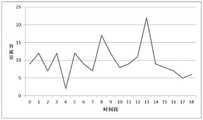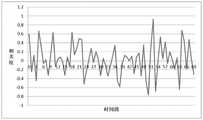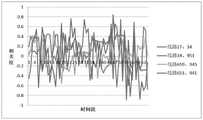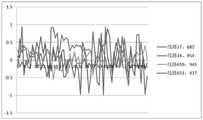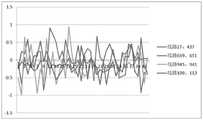CN111160722B - A bus route adjustment method based on passenger flow competition - Google Patents
A bus route adjustment method based on passenger flow competitionDownload PDFInfo
- Publication number
- CN111160722B CN111160722BCN201911273607.6ACN201911273607ACN111160722BCN 111160722 BCN111160722 BCN 111160722BCN 201911273607 ACN201911273607 ACN 201911273607ACN 111160722 BCN111160722 BCN 111160722B
- Authority
- CN
- China
- Prior art keywords
- passenger flow
- bus
- relationship
- method based
- lines
- Prior art date
- Legal status (The legal status is an assumption and is not a legal conclusion. Google has not performed a legal analysis and makes no representation as to the accuracy of the status listed.)
- Active
Links
Images
Classifications
- G—PHYSICS
- G06—COMPUTING OR CALCULATING; COUNTING
- G06Q—INFORMATION AND COMMUNICATION TECHNOLOGY [ICT] SPECIALLY ADAPTED FOR ADMINISTRATIVE, COMMERCIAL, FINANCIAL, MANAGERIAL OR SUPERVISORY PURPOSES; SYSTEMS OR METHODS SPECIALLY ADAPTED FOR ADMINISTRATIVE, COMMERCIAL, FINANCIAL, MANAGERIAL OR SUPERVISORY PURPOSES, NOT OTHERWISE PROVIDED FOR
- G06Q10/00—Administration; Management
- G06Q10/06—Resources, workflows, human or project management; Enterprise or organisation planning; Enterprise or organisation modelling
- G06Q10/063—Operations research, analysis or management
- G06Q10/0639—Performance analysis of employees; Performance analysis of enterprise or organisation operations
- G—PHYSICS
- G06—COMPUTING OR CALCULATING; COUNTING
- G06Q—INFORMATION AND COMMUNICATION TECHNOLOGY [ICT] SPECIALLY ADAPTED FOR ADMINISTRATIVE, COMMERCIAL, FINANCIAL, MANAGERIAL OR SUPERVISORY PURPOSES; SYSTEMS OR METHODS SPECIALLY ADAPTED FOR ADMINISTRATIVE, COMMERCIAL, FINANCIAL, MANAGERIAL OR SUPERVISORY PURPOSES, NOT OTHERWISE PROVIDED FOR
- G06Q10/00—Administration; Management
- G06Q10/06—Resources, workflows, human or project management; Enterprise or organisation planning; Enterprise or organisation modelling
- G06Q10/063—Operations research, analysis or management
- G06Q10/0637—Strategic management or analysis, e.g. setting a goal or target of an organisation; Planning actions based on goals; Analysis or evaluation of effectiveness of goals
- G—PHYSICS
- G06—COMPUTING OR CALCULATING; COUNTING
- G06Q—INFORMATION AND COMMUNICATION TECHNOLOGY [ICT] SPECIALLY ADAPTED FOR ADMINISTRATIVE, COMMERCIAL, FINANCIAL, MANAGERIAL OR SUPERVISORY PURPOSES; SYSTEMS OR METHODS SPECIALLY ADAPTED FOR ADMINISTRATIVE, COMMERCIAL, FINANCIAL, MANAGERIAL OR SUPERVISORY PURPOSES, NOT OTHERWISE PROVIDED FOR
- G06Q50/00—Information and communication technology [ICT] specially adapted for implementation of business processes of specific business sectors, e.g. utilities or tourism
- G06Q50/40—Business processes related to the transportation industry
Landscapes
- Business, Economics & Management (AREA)
- Human Resources & Organizations (AREA)
- Engineering & Computer Science (AREA)
- Strategic Management (AREA)
- Economics (AREA)
- Educational Administration (AREA)
- Entrepreneurship & Innovation (AREA)
- General Physics & Mathematics (AREA)
- General Business, Economics & Management (AREA)
- Marketing (AREA)
- Theoretical Computer Science (AREA)
- Development Economics (AREA)
- Tourism & Hospitality (AREA)
- Physics & Mathematics (AREA)
- Quality & Reliability (AREA)
- Game Theory and Decision Science (AREA)
- Operations Research (AREA)
- Health & Medical Sciences (AREA)
- General Health & Medical Sciences (AREA)
- Primary Health Care (AREA)
- Traffic Control Systems (AREA)
- Management, Administration, Business Operations System, And Electronic Commerce (AREA)
Abstract
Translated fromChineseDescription
Translated fromChinese技术领域technical field
本发明涉及数据分析在交通规划、交通运输管理的应用,更具体地说,涉及一种基于客流量竞争关系的公交路线调整方法。The invention relates to the application of data analysis in traffic planning and traffic management, and more particularly, to a bus route adjustment method based on the competition relationship of passenger flow.
背景技术Background technique
公交站点的客流量受随机因素影响很大,除天气、突发事件等外在因素外,在该站点停靠的各线路公交车之间存在着竞争关系。这是因为乘客出行时,往往有多条线路能到达目的地,公交线路选择并不唯一,乘客通常选择最快停靠的线路出行。这些可替代线路对客流量就形成了竞争关系,但从整个公交线网对客流量的吞吐能力角度,这些线路之间是合作关系。The passenger flow of a bus station is greatly affected by random factors. Except for external factors such as weather and emergencies, there is a competitive relationship between the buses of various lines that stop at the station. This is because when passengers travel, there are often multiple routes to reach their destination, and the choice of bus routes is not unique. Passengers usually choose the fastest route to travel. These alternative lines form a competitive relationship for passenger flow, but from the perspective of the throughput capacity of the entire bus network to passenger flow, these lines are cooperative.
对公交线路间的影响关系,现有技术的方法主要有:调整发车间隔消除公交车辆聚集、以车辆相遇次数最大为目标建立最大协同换乘模型、同步换乘、建立常规公交和轨道交通竞争模型、基于线路位置和重叠站点数量描述竞争和合作关系等方法。On the influence relationship between bus lines, the methods in the prior art mainly include: adjusting the departure interval to eliminate the aggregation of bus vehicles, establishing a maximum coordinated transfer model with the goal of maximizing the number of vehicle encounters, synchronizing transfers, and establishing a competition model for conventional bus and rail transit. , methods to describe competition and partnership based on line location and number of overlapping stations.
现有技术未提供公交站点之间的相互关系对公交网的吞吐量的影响,即从公交站点的各条停靠公交线路间的竞争关系角度获得公交线路之间的影响度。The prior art does not provide the influence of the mutual relationship between the bus stops on the throughput of the bus network, that is, the degree of influence between the bus lines is obtained from the perspective of the competitive relationship between the bus lines that stop at the bus stop.
发明内容SUMMARY OF THE INVENTION
本发明的目的在于克服现有技术的不足,提供一种基于客流量竞争关系的公交路线调整方法,基于客流量竞争关系,对公交站点分析公交线路间影响关系,可提高整个公交线网的客流吞吐量。The purpose of the present invention is to overcome the deficiencies of the prior art, and to provide a bus route adjustment method based on the passenger flow competition relationship. Based on the passenger flow competition relationship, the impact relationship between bus lines is analyzed for bus stops, and the passenger flow of the entire bus network can be improved. throughput.
本发明的技术方案如下:The technical scheme of the present invention is as follows:
一种基于客流量竞争关系的公交路线调整方法,步骤如下:A bus route adjustment method based on passenger flow competition, the steps are as follows:
1)设共有m辆车停靠该站点,所述的m辆车分属n条不同公交线路,为L={li|0≤i≤n},每辆车的历史刷卡数据按时间顺序形成一个客流量时间序列F=(f1,f2,…,fm),L和F的关系满足:F中任意fi对应的公交车都属于某公交线路lj∈L,其中,n≤m;1) Suppose a total of m vehicles stop at the site, and the m vehicles belong to n different bus lines, which is L={li |0≤i≤n}, and the historical card swiping data of each vehicle is formed in chronological order A passenger flow time series F=(f1 , f2 ,..., fm ), the relationship between L and F satisfies: the bus corresponding to any fi in F belongs to a certain bus line lj ∈ L, where n≤ m;
获取所有成对的公交线路li和lj在设定的时段内停靠在任意站点的客流量时间序列D={LF(li,lj)|0≤i≤n,0≤j≤n};Obtain the passenger flow time series of all pairs of bus lines li and lj that stop at any stop within the set period D={LF(li ,lj )|0≤i≤n,0≤j≤n };
2)拆分D中的所有LF(li,lj),形成两个序列和分属公交线路li和lj;2) Split all LF(li ,lj ) in D to form two sequences and belong to bus lines li and lj respectively;
3)计算任意和之间的相关度3) Calculate any and correlation between
其中,为和的协方差,与为和的方差;in, for and the covariance of , and for and Variance;
4)选取D中任意和在N天内的所有相关度K=1,2,…,N;4) Select any of D and All correlations in N days K=1,2,...,N;
5)按条件和把相关度向量集合V分为集合V+和集合V-,且5) By condition and Divide the correlation vector set V into a set V+ and a set V-, and
6)对于步骤5)获得的集合V+和集合V-,分别使用密度聚类方法进行聚类,分别获得正相关簇集C+和负相关簇集C-;6) For the set V+ and set V- obtained in step 5), use the density clustering method to perform clustering, respectively, to obtain a positive correlation cluster set C+ and a negative correlation cluster set C-;
其中,正相关簇集C+中的公交路线之间对客流量具有合作关系,负相关簇集C-中的公交路线之间对客流量具有竞争关系;Among them, the bus routes in the positive correlation cluster C+ have a cooperative relationship with the passenger flow, and the bus routes in the negative correlation cluster C- have a competitive relationship with the passenger flow;
7)根据正相关簇集C+和负相关簇集C-,对公交网中的公交路线进行调整,提高公交网的客流吞吐量。7) According to the positive correlation cluster C+ and the negative correlation cluster C-, adjust the bus routes in the public transport network to improve the passenger flow throughput of the public transport network.
作为优选,步骤1)具体为:As preferably, step 1) is specifically:
1.1)选取任意一对公交线路li∈L和lj∈L,从F中抽取出属于公交线路li和lj的历史刷卡数据,并按原顺序形成一个客流量时间序列LF(li,lj)=(f'1,f'2,…,f'q),满足:对LF(li,lj)中任意f'k和f'k+1,在F中都存在ft和ft+p与之对应,k<q,t<q-p,表示历史刷卡数据的相对顺序在L和LF中保持相对顺序不变;1.1) Select any pair of bus lines li ∈ L and lj ∈ L, extract the historical credit card data belonging to bus lines li and lj from F, and form a passenger flow time series LF (lii ,lj )=(f'1 ,f'2 ,...,f'q ), satisfying: For any f'k and f'k+1 in LF(li ,lj ), f exists in Ft and ft+p correspond to them, k < q, t < qp, indicating that the relative order of historical card swiping data remains unchanged in L and LF;
1.2)合并LF(li,lj)中的客流量形成新序列LF(li,lj)=(f'1,f'2,…,f't),t≤q,满足:f'2s-1和f'2s是分属不同公交线路li和lj的历史刷卡数据,1.2) Combine the passenger flow in LF(li ,lj ) to form a new sequence LF(li ,lj )=(f'1 ,f'2 ,...,f't ), t≤q, satisfying: f '2s-1 and f'2s are the historical credit card data belonging to different bus lines li and lj ,
1.3)重复步骤1.1)、步骤1.2),获取所有成对的公交线路li和lj在设定的时段内停靠在任意站点的客流量时间序列D={LF(li,lj)|0≤i≤n,0≤j≤n};1.3) Repeat steps 1.1) and 1.2) to obtain the passenger flow time series D= {LF(li, lj )| 0≤i≤n, 0≤j≤n};
进而,步骤2)中,Then, in step 2),
作为优选,步骤2)中,如果与的长度不同,则舍弃或中最后一个元素,使得与的长度相同。Preferably, in step 2), if and are different in length, discard or the last element in , such that and of the same length.
作为优选,步骤4)具体为:As preferably, step 4) is specifically:
4.1)初始化相关度向量集合4.1) Initialize the correlation vector set
4.2)选取D中任意和在N天内的所有相关度K=1,2,…,N;4.2) Select any of D and All correlations in N days K=1,2,...,N;
4.3)按时间顺序,建立相关度向量(ρ1,ρ2,…,ρN),形成V←(ρ1,ρ2,…,ρN)。4.3) In time sequence, establish a correlation vector (ρ1 ,ρ2 ,...,ρN ) to form V←(ρ1 ,ρ2 ,...,ρN ).
作为优选,步骤3)中,As preferably, in step 3),
其中,与为和的平均差。in, and for and average difference.
本发明的有益效果如下:The beneficial effects of the present invention are as follows:
本发明所述的基于客流量竞争关系的公交路线调整方法,通过对公交站点的所有停靠公交线路的客流量时间序列进行相关性分析,可求解正负相关线路集,即获得影响关系的强弱,即通过分析停靠公交站点的公交线路之间对客流量的竞争关系,反映各公交线路的设置对整个公交网的客流吞吐量的影响,有助于改进和优化线路和站点设置。The bus route adjustment method based on the passenger flow competition relationship of the present invention can solve the positive and negative correlation line set by performing correlation analysis on the passenger flow time series of all bus stops at the bus station, that is, the strength of the influence relationship can be obtained. , that is, by analyzing the competition relationship between the bus lines that stop at the bus stop on the passenger flow, it can reflect the impact of the settings of each bus line on the passenger flow throughput of the entire bus network, which is helpful to improve and optimize the line and station settings.
本发明不依赖于特定场景,更加通用,可用于各大中城市的公交网络。The present invention does not depend on a specific scenario, is more general, and can be used in public transport networks in large and medium-sized cities.
附图说明Description of drawings
图1是本发明的流程示意图;Fig. 1 is the schematic flow sheet of the present invention;
图2是创建客流量序列的实现过程的示意图;Fig. 2 is the schematic diagram of the realization process of creating passenger flow sequence;
图3是实施例中,2019年10月10日塘边站各线路客流量的示意图;3 is a schematic diagram of the passenger flow of each line of Tangbian Station on October 10, 2019 in the embodiment;
图4是实施例中,2019年10月10日951路线路客流量;Figure 4 shows the passenger flow of
图5是实施例中,2019年10月10日27路线路客流量的示意图;Figure 5 is a schematic diagram of the passenger flow of 27 routes on October 10, 2019 in the embodiment;
图6是实施例中,27路与951路多天的相关度的示意图;6 is a schematic diagram of the multi-day correlation between 27 routes and 951 routes in an embodiment;
图7是实施例中,线路之间相关度之和为负的线路集合的示意图;7 is a schematic diagram of a set of lines whose sum of correlations between lines is negative in an embodiment;
图8是实施例中,线路之间相关度之和为正的线路集合的示意图;8 is a schematic diagram of a set of lines whose sum of correlations between lines is positive in an embodiment;
图9是实施例中,具有合作关系的线路的示意图;9 is a schematic diagram of a line with a cooperative relationship in an embodiment;
图10是实施例中,具有竞争关系的线路的示意图;FIG. 10 is a schematic diagram of lines having a competitive relationship in an embodiment;
图11是实施例中,各站点正、负相关的可视化的示意图;11 is a schematic diagram of the visualization of the positive and negative correlations of each site in an embodiment;
图12是实施例中,全岛各站点正、负相关的可视化的示意图。FIG. 12 is a schematic diagram of the visualization of positive and negative correlations of each site on the whole island in the embodiment.
具体实施方式Detailed ways
以下结合附图及实施例对本发明进行进一步的详细说明。The present invention will be further described in detail below with reference to the accompanying drawings and embodiments.
本发明所述的基于客流量竞争关系的公交路线调整方法,如图1所示,步骤如下:The bus route adjustment method based on the passenger flow competition relationship according to the present invention, as shown in Figure 1, the steps are as follows:
1)设共有m辆车停靠该站点,所述的m辆车分属n条不同公交线路,为L={li|0≤i≤n},每辆车的历史刷卡数据按时间顺序形成一个客流量时间序列F=(f1,f2,…,fm),L和F的关系满足:F中任意fi对应的公交车都属于某公交线路lj∈L,其中,n≤m;1) Suppose a total of m vehicles stop at the site, and the m vehicles belong to n different bus lines, which is L={li |0≤i≤n}, and the historical card swiping data of each vehicle is formed in chronological order A passenger flow time series F=(f1 , f2 ,..., fm ), the relationship between L and F satisfies: the bus corresponding to any fi in F belongs to a certain bus line lj ∈ L, where n≤ m;
获取所有成对的公交线路li和lj在设定的时段内停靠在任意站点的客流量时间序列D={LF(li,lj)|0≤i≤n,0≤j≤n}。Obtain the passenger flow time series of all pairs of bus lines li and lj that stop at any stop within the set period D={LF(li ,lj )|0≤i≤n,0≤j≤n }.
2)拆分D中的所有LF(li,lj),形成两个序列和分属公交线路li和lj。由于与的长度不一样相同,如果与的长度不同,则舍弃或中最后一个元素,使得与的长度相同。2) Split all LF(li ,lj ) in D to form two sequences and They belong to bus lines li and lj . because and The lengths are not the same as if and are different in length, discard or the last element in , such that and of the same length.
3)计算任意和之间的相关度3) Calculate any and correlation between
其中,为和的协方差,与为和的方差。具体地,in, for and the covariance of , and for and Variance. specifically,
其中,与为和的平均差。in, and for and average difference.
4)选取D中任意和在N天内的所有相关度K=1,2,…,N。4) Select any of D and All correlations in N days K=1,2,...,N.
当乘客有多个公交线路可选时,停靠同一公交站点的不同公交线路对客流量实质上是竞争关系。这种竞争关系会受到多种因素影响,比如节假日、天气等因素,一个时段难以准确反映这种竞争关系,需要N天同时段综合考虑,其中,N>1。进而,步骤4)具体为:When passengers have multiple bus routes to choose from, different bus routes that stop at the same bus stop are essentially a competitive relationship for passenger flow. This competitive relationship will be affected by a variety of factors, such as holidays, weather and other factors. It is difficult to accurately reflect this competitive relationship in one time period, and it needs to be comprehensively considered for N days and the same time period, where N>1. Then, step 4) is specifically:
4.1)初始化相关度向量集合4.1) Initialize the correlation vector set
4.2)选取D中任意和在N天内的所有相关度K=1,2,…,N;4.2) Select any of D and All correlations in N days K=1,2,...,N;
4.3)按时间顺序,建立相关度向量(ρ1,ρ2,…,ρN),形成V←(ρ1,ρ2,…,ρN)。4.3) In time sequence, establish a correlation vector (ρ1 ,ρ2 ,...,ρN ) to form V←(ρ1 ,ρ2 ,...,ρN ).
5)按条件和把相关度向量集合V分为集合V+和集合V-,且5) By condition and Divide the correlation vector set V into a set V+ and a set V- , and
6)对于步骤5)获得的集合V+和集合V-,分别使用密度聚类方法进行聚类,分别获得正相关簇集C+和负相关簇集C-;6) For the set V+ and set V− obtained in step 5), use the density clustering method to perform clustering, respectively, to obtain a positive correlation cluster set C+ and a negative correlation cluster set C− ;
其中,正相关簇集C+中的公交路线之间对客流量具有合作关系,负相关簇集C-中的公交路线之间对客流量具有竞争关系。Among them, the bus routes in the positive correlation cluster C+ have a cooperative relationship with the passenger flow, and the bus routes in the negative correlation clusterC- have a competitive relationship with the passenger flow.
7)根据正相关簇集C+和负相关簇集C-,对公交网中的公交路线进行调整,提高公交网的客流吞吐量。当需要增加某条公交路线的客流量时,可基于正相关簇集C+,增加具有合作关系的相应的公交路线,或者减少具有竞争关系的相应的公交路线;反之同理。7) According to the positive correlation cluster C+ and the negative correlation cluster C− , adjust the bus routes in the public transport network to improve the passenger flow throughput of the public transport network. When the passenger flow of a certain bus route needs to be increased, based on the positive correlation cluster C+ , the corresponding bus routes with a cooperative relationship can be increased, or the corresponding bus routes with a competitive relationship can be decreased; and vice versa.
本发明中,步骤1)为数据预处理步骤,具体为:In the present invention, step 1) is a data preprocessing step, specifically:
1.1)选取任意一对公交线路li∈L和lj∈L,从F中抽取出属于公交线路li和lj的历史刷卡数据,并按原顺序形成一个客流量时间序列LF(li,lj)=(f'1,f'2,…,f'q),满足:对LF(li,lj)中任意f'k和f'k+1,在F中都存在ft和ft+p与之对应,k<q,t<q-p,表示历史刷卡数据的相对顺序在L和LF中保持相对顺序不变,如图2所示;1.1) Select any pair of bus lines li ∈ L and lj ∈ L, extract the historical credit card data belonging to bus lines li and lj from F, and form a passenger flow time series LF (lii ,lj )=(f'1 ,f'2 ,...,f'q ), satisfying: For any f'k and f'k+1 in LF(li ,lj ), f exists in Ft and ft+p correspond to them, k < q, t < qp, indicating that the relative order of historical card swiping data remains unchanged in L and LF, as shown in Figure 2;
1.2)合并LF(li,lj)中的客流量形成新序列LF(li,lj)=(f'1,f'2,…,f't),t≤q,满足:f'2s-1和f'2s是分属不同公交线路li和lj的历史刷卡数据,其中,合并LF(li,lj)中的客流量所形成的新序列,了便于表达,仍然采用LF(li,lj)表示新序列。1.2) Combine the passenger flow in LF(li ,lj ) to form a new sequence LF(li ,lj )=(f'1 ,f'2 ,...,f't ), t≤q, satisfying: f '2s-1 and f'2s are the historical credit card data belonging to different bus lines li and lj , Among them, the new sequence formed by merging the passenger flow in LF(li , lj ) is still usedtorepresent the new sequence for convenience of expression.
1.3)重复步骤1.1)、步骤1.2),获取所有成对的公交线路li和lj在设定的时段内停靠在任意站点的客流量时间序列D={LF(li,lj)|0≤i≤n,0≤j≤n};1.3) Repeat steps 1.1) and 1.2) to obtain the passenger flow time series D= {LF(li, lj )| 0≤i≤n, 0≤j≤n};
进而,步骤2)中,Then, in step 2),
具体实施时,因为高峰时段的客流行为相对固定,进而,步骤1)选定的时段通常选择高峰时段,高峰时段根据每个城市情况不同而设置,通常为:早上7:00-9:30。During the specific implementation, because the passenger flow behavior during peak hours is relatively fixed, further, the time period selected in step 1) usually selects the peak time period.
实施例Example
以厦门塘边站为例,取出塘边站单日的刷卡数据,塘边站共有17条线路停靠。塘边站单条线路的刷卡数据量有300多条,所有线路的总刷卡量有5248条。刷卡数据字段包括:线路号、车牌号、交易日期、刷卡卡号、交易时间、交易金额、车次、站点编号、行驶方向。Take Xiamen's Tangbian Station as an example, take out the single-day card swipe data at Tangbian Station, and there are a total of 17 lines stopping at Tangbian Station. There are more than 300 card swiping data for a single line at Tangbian Station, and a total of 5,248 card swiping data for all lines. The card swiping data fields include: line number, license plate number, transaction date, swiping card number, transaction time, transaction amount, train number, station number, and driving direction.
刷卡数据如表1所示。The credit card data is shown in Table 1.
表1:线路刷卡数据Table 1: Line Card Data
按各线路车次的到达顺序,统计同一天的早高峰期7:00-9:30之间每个线路车次的刷卡量,得到初始的站点客流量序列,如图3所示。According to the arrival order of the trains on each line, count the card swiping amount of each line train in the morning peak period of the same day between 7:00-9:30, and obtain the initial station passenger flow sequence, as shown in Figure 3.
从塘边站停靠的所有线路车次的客流量序列中,取每对线路的客流量序列,例如951路和27路的客流量序列,如图4、图5所示。From the passenger flow sequence of all lines and trains stopped at Tangbian Station, take the passenger flow sequence of each pair of lines, such as the passenger flow sequence of No. 951 and No. 27, as shown in Figure 4 and Figure 5.
对每对线路的客流量序列,将其变成等长序列。For the passenger flow sequence of each pair of lines, turn it into a sequence of equal length.
采用本发明求解不同日期的每对线路的客流量时间序列,求解不同日期的相关度,得到相关度向量,如图6所示。The present invention is used to solve the passenger flow time series of each pair of lines on different dates, to solve the correlation degree of different days, and to obtain the correlation degree vector, as shown in FIG. 6 .
对每对线路的相关度向量求和,当相关度和为正时,加入正相关度集合,相关度和为负时加入负相关度向量集合,如图7、图8所示。Sum the correlation vectors of each pair of lines. When the correlation sum is positive, add the positive correlation set, and when the correlation sum is negative, add the negative correlation vector set, as shown in Figure 7 and Figure 8.
分别对正、负相关度向量集合,利用密度聚类求解具相似相关度的线路集合。负相关簇集中所求得的簇代表线路之间为竞争关系。正相关簇集中所求得的簇代表线路之间为合作关系,如图9、图10所示。可见,当处于高峰时期时可增加具有合作关系的线路合作分担站点客流量压力,如增加线路27、437发车车次。当站点客流量较少时部分线路就可满足站点客流量对车次的需求,可考虑减少具有竞争关系的部分线路,如可减少线路27、34发车车次。For the sets of positive and negative correlation degree vectors respectively, use density clustering to solve the set of lines with similar degree of correlation. The clusters obtained in the negative correlation cluster set represent the competition relationship between the lines. The clusters obtained in the positive correlation cluster set represent the cooperative relationship between the lines, as shown in Figure 9 and Figure 10. It can be seen that when it is in the peak period, it is possible to increase the cooperation of lines with cooperative relations to share the passenger flow pressure of the site, such as increasing the number of departures of
本实施例中,公交线路的空间可视化如图11、图12所示。In this embodiment, the spatial visualization of the bus route is shown in FIG. 11 and FIG. 12 .
上述实施例仅是用来说明本发明,而并非用作对本发明的限定。只要是依据本发明的技术实质,对上述实施例进行变化、变型等都将落在本发明的权利要求的范围内。The above-mentioned embodiments are only used to illustrate the present invention, but not to limit the present invention. As long as it is in accordance with the technical essence of the present invention, changes, modifications, etc. to the above-described embodiments will fall within the scope of the claims of the present invention.
Claims (5)
Priority Applications (1)
| Application Number | Priority Date | Filing Date | Title |
|---|---|---|---|
| CN201911273607.6ACN111160722B (en) | 2019-12-12 | 2019-12-12 | A bus route adjustment method based on passenger flow competition |
Applications Claiming Priority (1)
| Application Number | Priority Date | Filing Date | Title |
|---|---|---|---|
| CN201911273607.6ACN111160722B (en) | 2019-12-12 | 2019-12-12 | A bus route adjustment method based on passenger flow competition |
Publications (2)
| Publication Number | Publication Date |
|---|---|
| CN111160722A CN111160722A (en) | 2020-05-15 |
| CN111160722Btrue CN111160722B (en) | 2022-05-03 |
Family
ID=70556841
Family Applications (1)
| Application Number | Title | Priority Date | Filing Date |
|---|---|---|---|
| CN201911273607.6AActiveCN111160722B (en) | 2019-12-12 | 2019-12-12 | A bus route adjustment method based on passenger flow competition |
Country Status (1)
| Country | Link |
|---|---|
| CN (1) | CN111160722B (en) |
Families Citing this family (2)
| Publication number | Priority date | Publication date | Assignee | Title |
|---|---|---|---|---|
| CN111754757B (en)* | 2020-06-24 | 2022-08-30 | 广州公交集团第三公共汽车有限公司 | Bus competition line scheduling method |
| CN113177681A (en)* | 2021-03-15 | 2021-07-27 | 蓝海(福建)信息科技有限公司 | Intercity travel passenger vehicle line correlation identification method |
Citations (6)
| Publication number | Priority date | Publication date | Assignee | Title |
|---|---|---|---|---|
| AU2007333025A1 (en)* | 2006-12-13 | 2008-06-19 | Crown Equipment Corporation | Fleet management system |
| CN102156908A (en)* | 2010-12-17 | 2011-08-17 | 东南大学 | Bus route and station adjusting method based on rail transit and bus integration |
| KR20170096715A (en)* | 2016-02-17 | 2017-08-25 | 한양대학교 산학협력단 | Method for evaluating operation efficiency of late-night bus |
| CN109886491A (en)* | 2019-02-26 | 2019-06-14 | 北京工业大学 | A two-stage optimal scheduling method for ground public transport driven by massive operation data |
| CN110188938A (en)* | 2019-05-23 | 2019-08-30 | 东南大学 | A screening method for the adjustment of ground bus routes in the initial expectation of rail transit network formation |
| CN110458331A (en)* | 2019-07-18 | 2019-11-15 | 南京行者易智能交通科技有限公司 | Optimization method and device is straightened around public bus network in a kind of mistake based on OD passenger flow data |
- 2019
- 2019-12-12CNCN201911273607.6Apatent/CN111160722B/enactiveActive
Patent Citations (6)
| Publication number | Priority date | Publication date | Assignee | Title |
|---|---|---|---|---|
| AU2007333025A1 (en)* | 2006-12-13 | 2008-06-19 | Crown Equipment Corporation | Fleet management system |
| CN102156908A (en)* | 2010-12-17 | 2011-08-17 | 东南大学 | Bus route and station adjusting method based on rail transit and bus integration |
| KR20170096715A (en)* | 2016-02-17 | 2017-08-25 | 한양대학교 산학협력단 | Method for evaluating operation efficiency of late-night bus |
| CN109886491A (en)* | 2019-02-26 | 2019-06-14 | 北京工业大学 | A two-stage optimal scheduling method for ground public transport driven by massive operation data |
| CN110188938A (en)* | 2019-05-23 | 2019-08-30 | 东南大学 | A screening method for the adjustment of ground bus routes in the initial expectation of rail transit network formation |
| CN110458331A (en)* | 2019-07-18 | 2019-11-15 | 南京行者易智能交通科技有限公司 | Optimization method and device is straightened around public bus network in a kind of mistake based on OD passenger flow data |
Non-Patent Citations (1)
| Title |
|---|
| 竞争性常规公交与城市轨道交通衔接调整方法研究――以青岛市地铁3号线为例;房涛等;《城市公共交通》;20180815(第08期);全文* |
Also Published As
| Publication number | Publication date |
|---|---|
| CN111160722A (en) | 2020-05-15 |
Similar Documents
| Publication | Publication Date | Title |
|---|---|---|
| CN104239484B (en) | A Timetable Compilation Method Based on Multi-modal Bus Combination Scheduling | |
| CN104504229B (en) | A kind of intelligent public transportation dispatching method based on hybrid metaheuristics | |
| WO2021004115A1 (en) | Combined dispatching optimization method for manned buses and autonomous buses | |
| CN111160722B (en) | A bus route adjustment method based on passenger flow competition | |
| CN109800916B (en) | A Modeling Method for Incoming Traffic Flow in Expressway Service Areas | |
| CN104485003B (en) | A kind of intelligent traffic signal control method based on pipeline model | |
| CN105261211B (en) | A kind of bus departure interval transition method under the influence of traffic composite factor | |
| CN110390349A (en) | Modeling method for forecasting bus passenger flow based on XGBoost model | |
| CN108536965B (en) | Calculation Method of Operation Service Reliability of Urban Rail Transit Lines | |
| CN106651181B (en) | Risk assessment method of bus passenger flow congestion under network operation conditions | |
| CN105489002A (en) | Intelligent matching and route optimization-base carpooling method and system | |
| CN107545730A (en) | A kind of website based on Based on Bus IC Card Data is got on or off the bus passenger's number estimation method | |
| CN105225473A (en) | The fast line design method of a kind of public transport based on website efficiency calculation | |
| CN110020745B (en) | Real-time large-scale aviation hub parking lot scale prediction method based on flight schedule | |
| CN104616076A (en) | Method and system for optimizing multi-line collaborative operation scheme of urban rail transit | |
| CN103226892A (en) | Optimized road congestion state discovery method | |
| CN110197335A (en) | A kind of get-off stop number calculation method based on probability OD distributed model | |
| CN110119884A (en) | A kind of high-speed railway passenger flow Time segments division method based on neighbour's propagation clustering | |
| CN110555448A (en) | Method and system for subdividing dispatch area | |
| CN112150802A (en) | Urban road grade division method based on ground bus running state reliability | |
| CN110866775A (en) | A machine learning-based method for user air-rail intercity travel information processing | |
| CN111582601A (en) | Method and device for site selection of a bus stop | |
| CN111126681B (en) | A method of bus route adjustment based on historical passenger flow | |
| CN112949926B (en) | A revenue-maximizing ticket allocation method based on passenger demand re-identification | |
| CN109544967A (en) | A kind of public transport network running state monitoring method based on low frequency AVL data |
Legal Events
| Date | Code | Title | Description |
|---|---|---|---|
| PB01 | Publication | ||
| PB01 | Publication | ||
| SE01 | Entry into force of request for substantive examination | ||
| SE01 | Entry into force of request for substantive examination | ||
| GR01 | Patent grant | ||
| GR01 | Patent grant |




